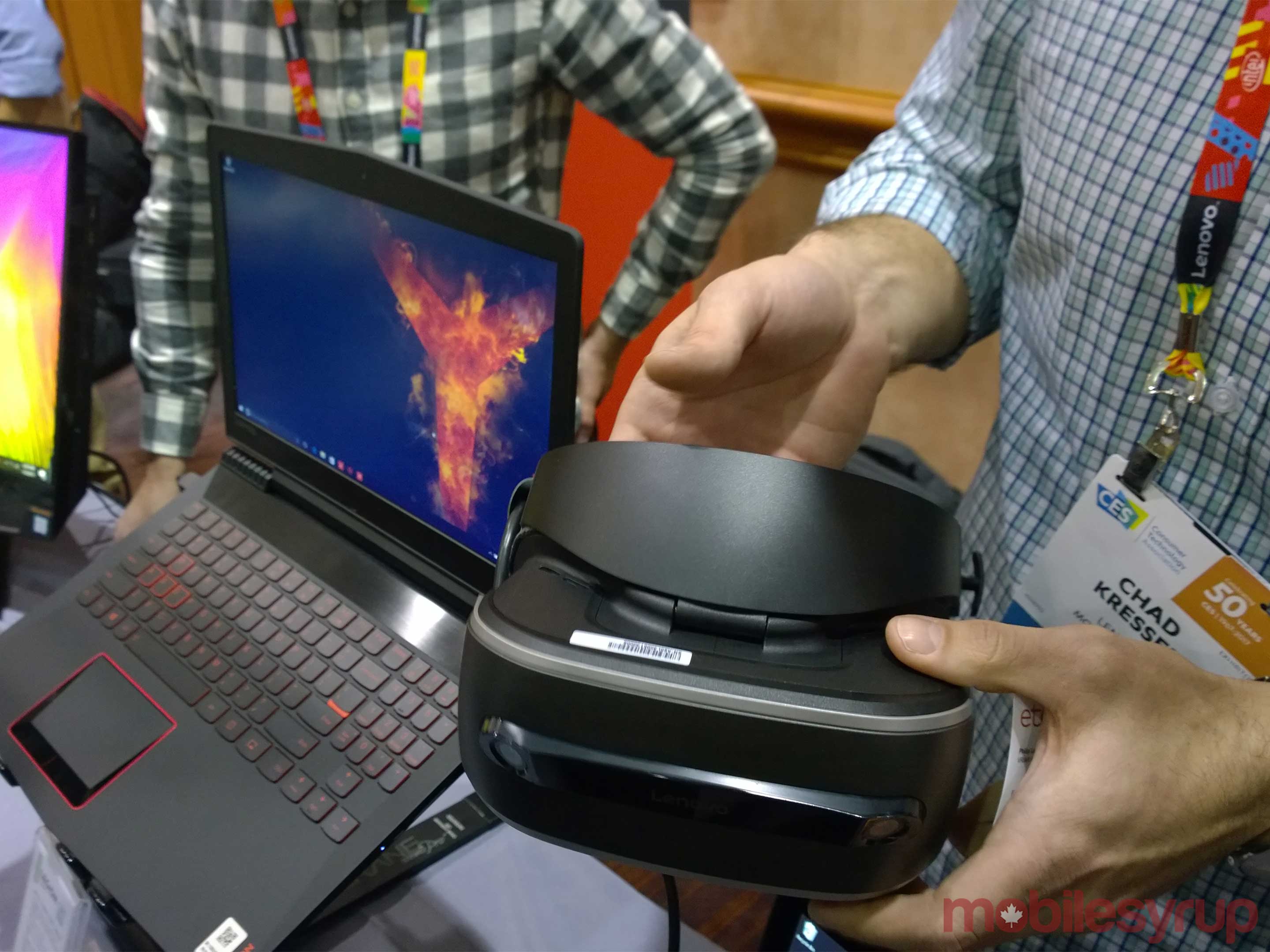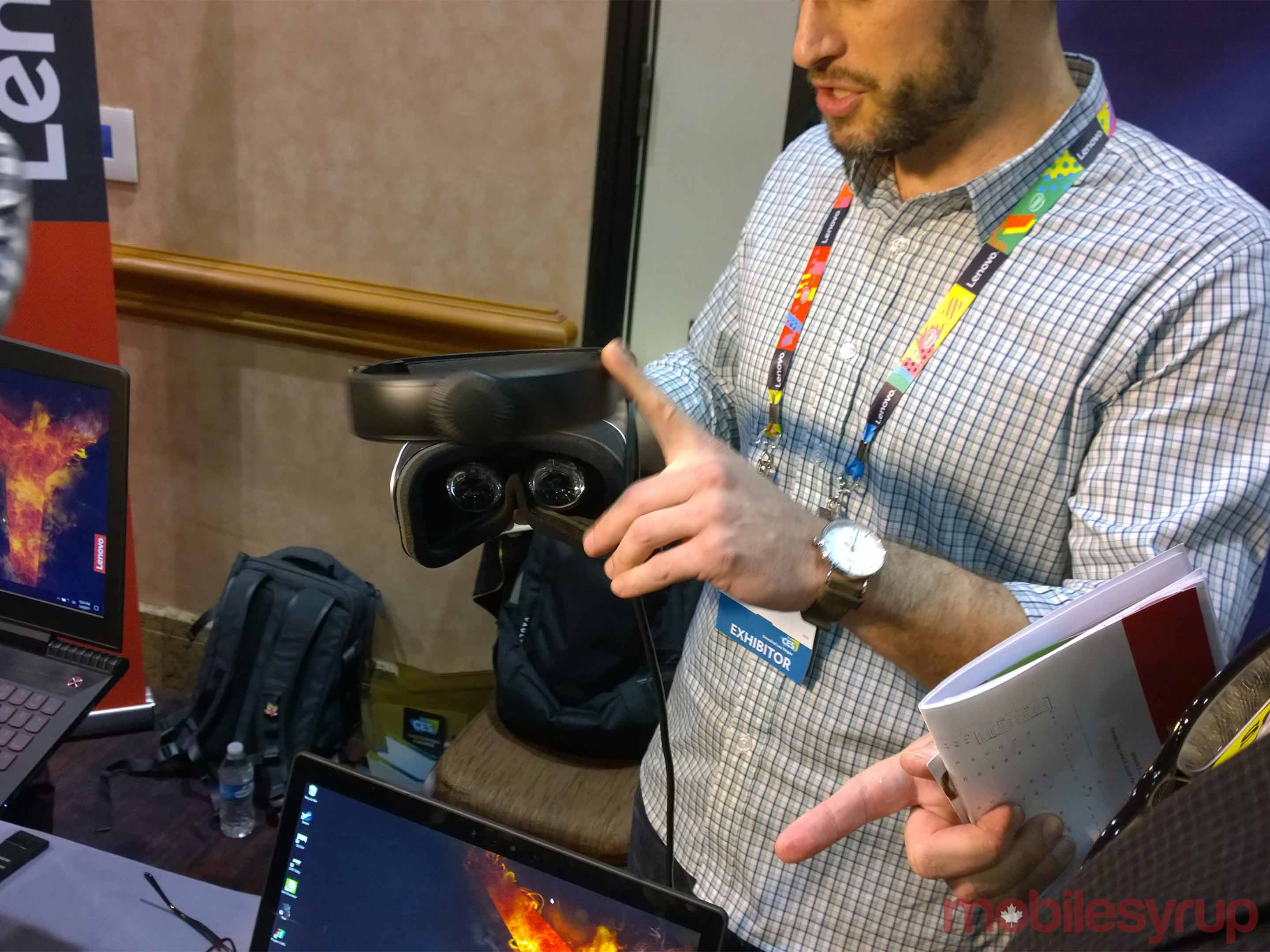
Back at its fall Windows 10 event, Microsoft announced its OEM partners planned to ship several affordable virtual reality headsets in 2017. At the time, the company didn’t give many details about its VR ambitions, merely stating that most of the headsets it planned to co-release in the new year would cost as low as $200 USD.
Cut to the Consumer Electronics Show (CES) 2017, underway this week in Las Vegas, Nevada, and there’s now more information on one of the upcoming Windows Holographic headsets.
On Monday, Lenovo showed a prototype of its upcoming Windows Holographic VR headset to U.S.-based tech publications in a behind closed doors briefing.
Weighing in at 350 grams, Lenovo’s virtual reality headset is lighter than both the 450g Oculus Rift and 550g HTC Vive. It also features two 1,440 x 1,440 pixel OLED panels, making its display higher resolution than the two current high-end VR leaders. Unfortunately, the prototype Lenovo brought to CES wasn’t a functioning one, so tech media on the ground in Las Vegas didn’t get a chance to use the device. That said, with a design that borrows a page from Sony’s design notebook,
The headset’s main differentiating feature is a pair of front-facing cameras that allow the device to do room-scale VR without the aid of external cameras or sensors.
Lenovo told both The Verge and Engadget it plans to sell the device for less than $400 USD. There’s no word yet on Canadian pricing and availability. However, the headset will likely land in North American in and around the launch of Windows 10’s Creators Update.
Image credit: The Verge
[via]Engadget[/via]
MobileSyrup may earn a commission from purchases made via our links, which helps fund the journalism we provide free on our website. These links do not influence our editorial content. Support us here.



